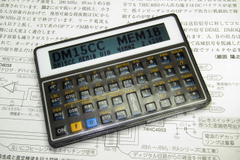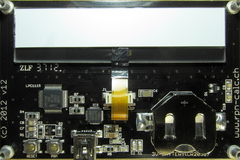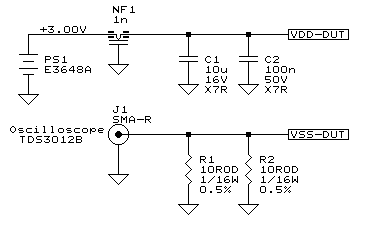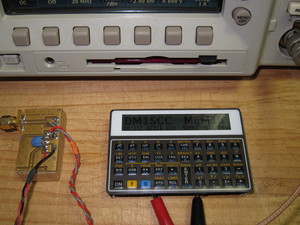

Smooth font
Firmware = DM15CC_MEM80_V8Slim font
Firmware = DM15CC_S_V10

(NXP LPC1115F/303 12MHz, SILABS CP2012DCL0Y5, C6=100uF)
Note *1 : There is a possibility of bare short circuit of the battery, caused by accidental contact of the outer terminal of the battery holder to the ground through the housing and the shield of the mini-USB inlet. It's recommended to use some insulation material such as Kapton(R) tapes between the battery holder and the housing.
Note *2 : The housing of the calculator is not electrically connected to the PCB. It's recommended to connect the housing to the ground of the PCB to prevent ESD and EMI problems.
Note *3 : It seems to correct dust easily by electro-static because both the keypad overlay and the paint of the housing are not treated nor made of anti-static materials. To make the things worse, its physical shape work as a scraper to gather the dust into the calculator through the large clearance between the housing and its front pannel. It's recommended to use anti-static materials for the calculator body, and preferably to use dust seal or at least dust preventing structures.
Power off state (sleep) current Isleep ≤ 1.8uA (Vdd = 3.00V, Ta = 25C)
Test circuit (DUT = DM-15CC, firmware = DM15CC_MEM1B_V10)


Note *4 : Vdd of 3.00V is shown as 2.815V in the information displayed by [ON]+[E]
Standby current (Vdd = 3.00V, Ta = 25C)
mode = 12MHz ( 5mV/div ≡ 1mA/div) mode = 48MHz ( 5mV/div ≡ 1mA/div) Note *5 : There seems to be a problem in standby state of 12MHz mode. Its average standby current is much higher than that of 48MHz mode.
Operating current *6(Vdd = 3.00V, Ta = 25C)
mode = 12MHz ( 5mV/div ≡ 1mA/div) mode = 48MHz (20mV/div ≡ 4mA/div) Note *6 : while executing self test invoked by pressing [ON] and [×].
keys function description [ON]+[B] benchmark evaluate benchmark compared with orig. calc [ON]+[C] serial console switch to serial console (38400, 8N1, without flow control) [ON]+[E] show information firmware version & battery voltage [ON]+[CHS] LCD settings change LCD contrast [ON]+[7] change font toggle from 7segment to smooth font and back again [ON]+[9] change speed toggle from 12MHz to 48MHz and back again [ON]+[/] key test same as on the original calculator [ON]+[*] self test same as on the original calculator [ON]+[-] power reset same as on the original calculator [ON]+[+] same as on the original calculator [ON]+[.] toggle . and , same as on the original calculator
serial console command help
N-queen benchmark : 3m16s (DM15CC MEM1B V9 48MHz), x = 876, y = 8
example1 - N-queen benchmark
example2 - Electrical Engineering library
Programs in the Engineering library Entry
pointfunction input output A Synthesize
Microstripline
Z→wX = Zmicrostrip
R7 = εr
R8 = height
R9 = thicknessX = width
Y = 1/√εreffB Analyze
Microstripline
w→ZX = width
R7 = εr
R8 = height
R9 = thicknessX = Zmicrostrip
Y = 1/√εreffC Rational
interpolationX = xi
R1 = x1, R2 = x2, R3 = x3
R4 = y1, R5 = y2, R6 = y3X = yi D Differential
Impedance
s→ZdiffX = side gap
R0 = Z
R8 = heightX = Zdiff E factor X = positive integer E = factors 1 Z→S11 X = R + jX X = S11
Y = Return loss
Z = VSWR2 LCM
GCDX = positive integer
Y = positive integerX = LCM
Y = GCD3 Fractional
approximationX = decimal number X = denominator
Y = numerator
DM swiss made calculators
The Museum of HP Calculators
Flash Magic Tool
Silicon labs, CP210x USB to UART Bridge VCP Drivers

![[Mail]](/~lyuka/images/mail.gif)



 © 2000 Takayuki HOSODA.
© 2000 Takayuki HOSODA.